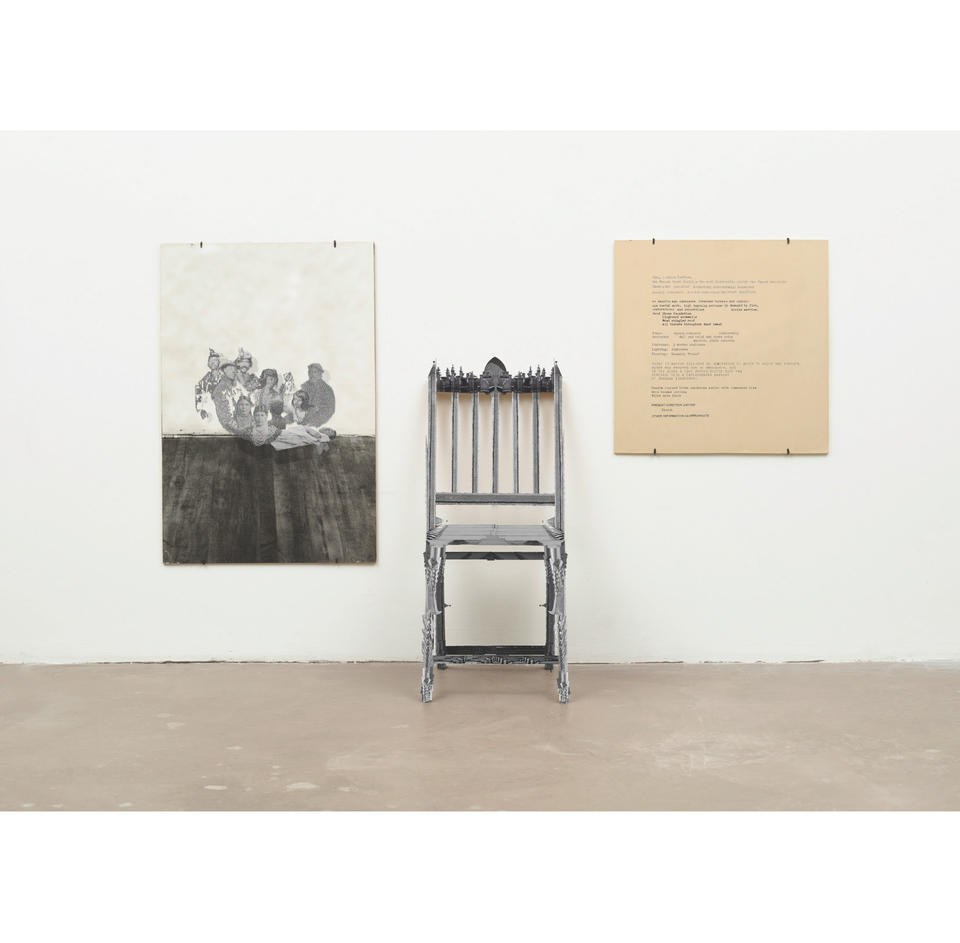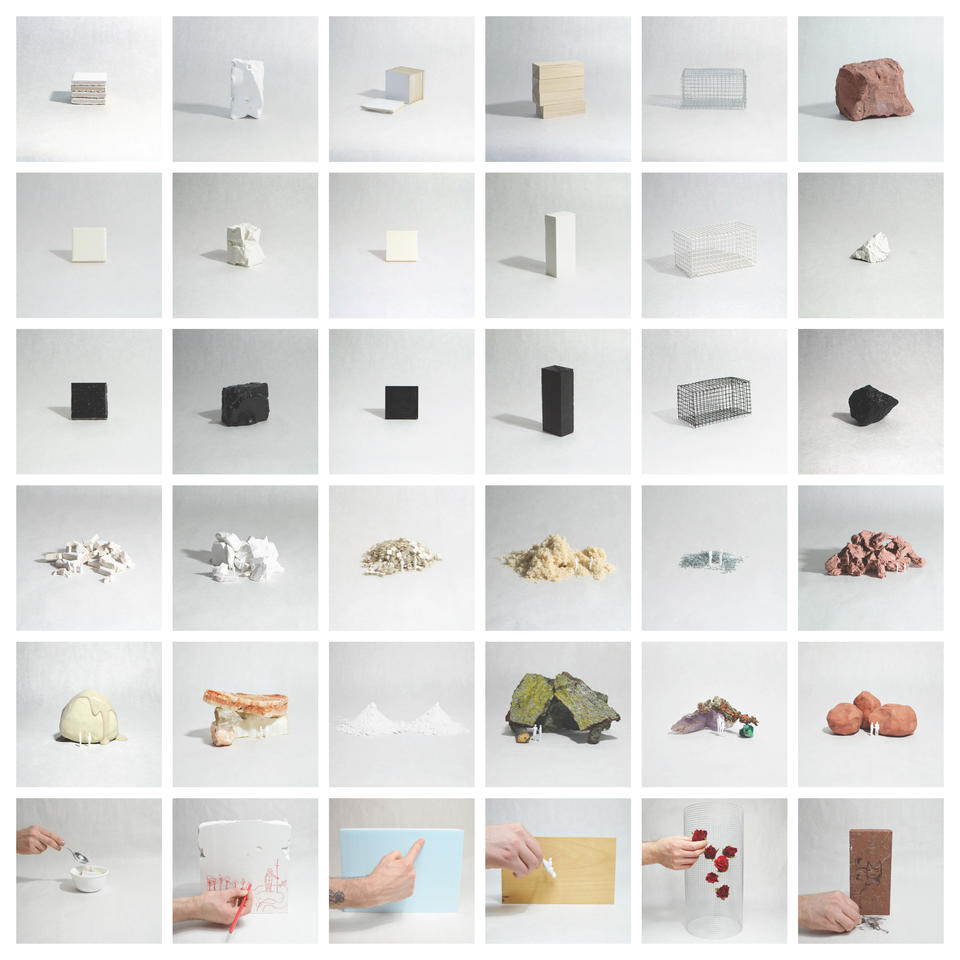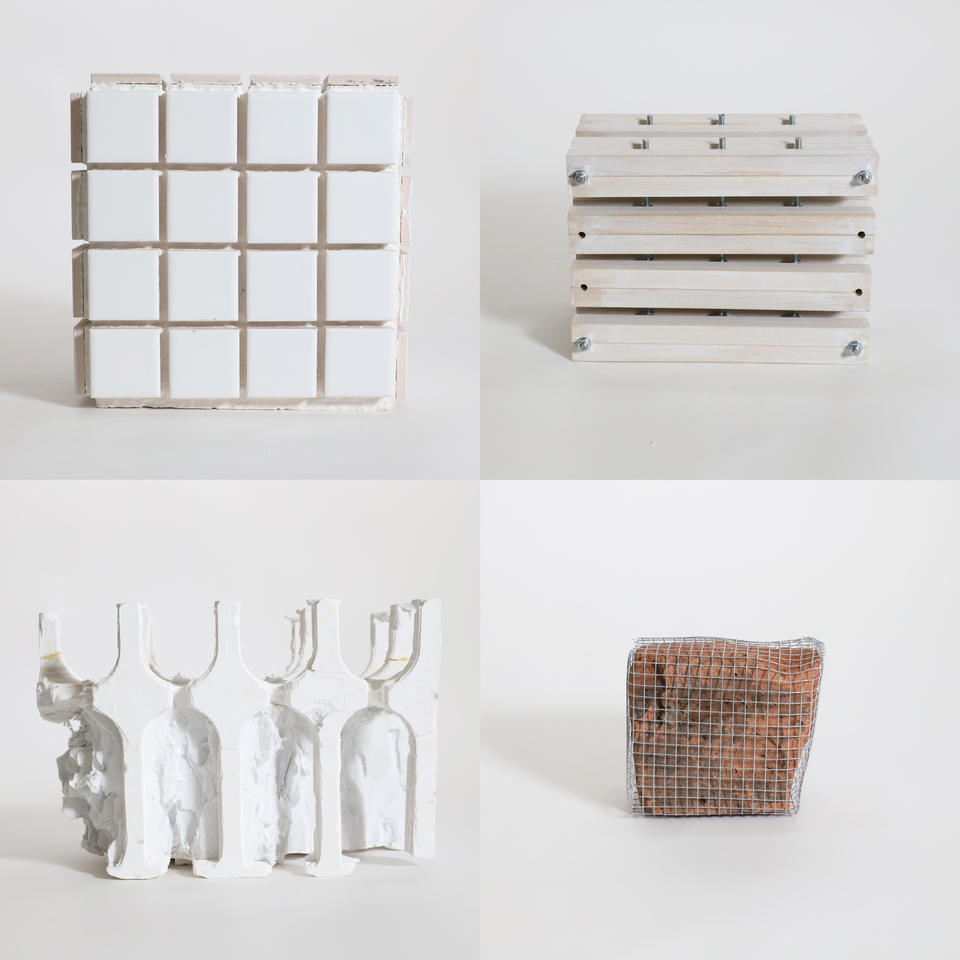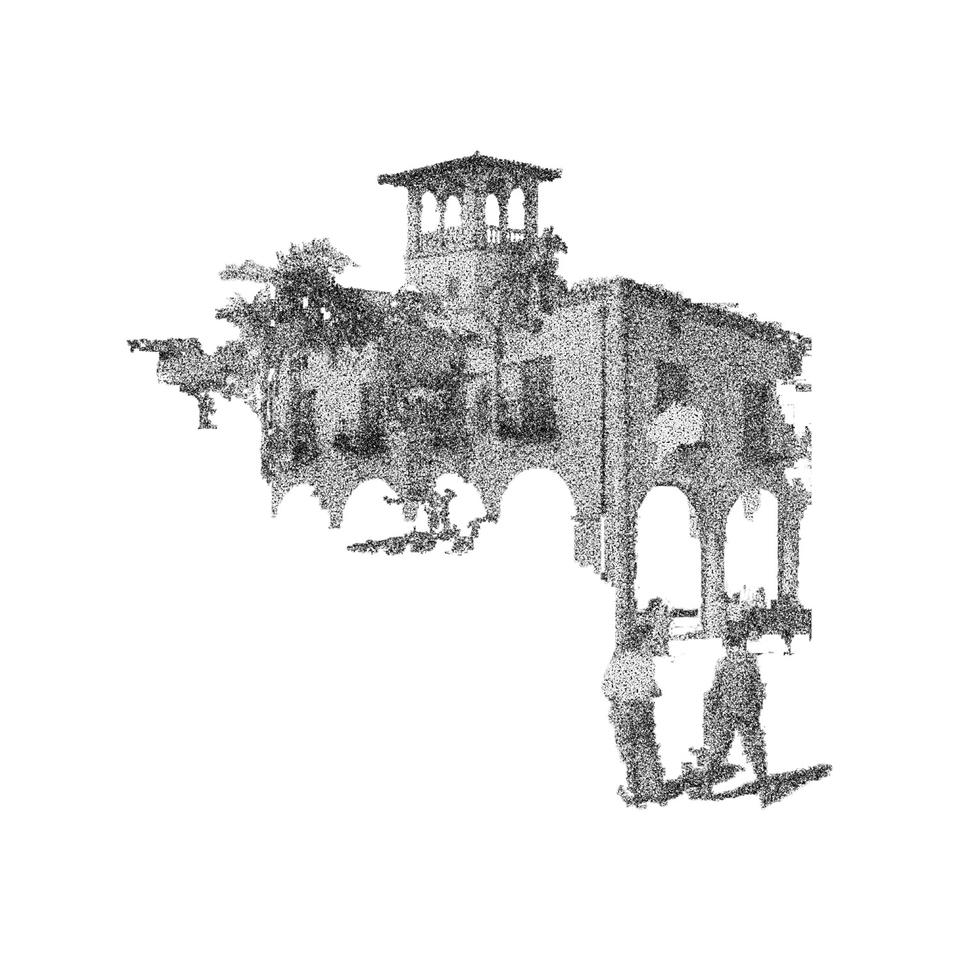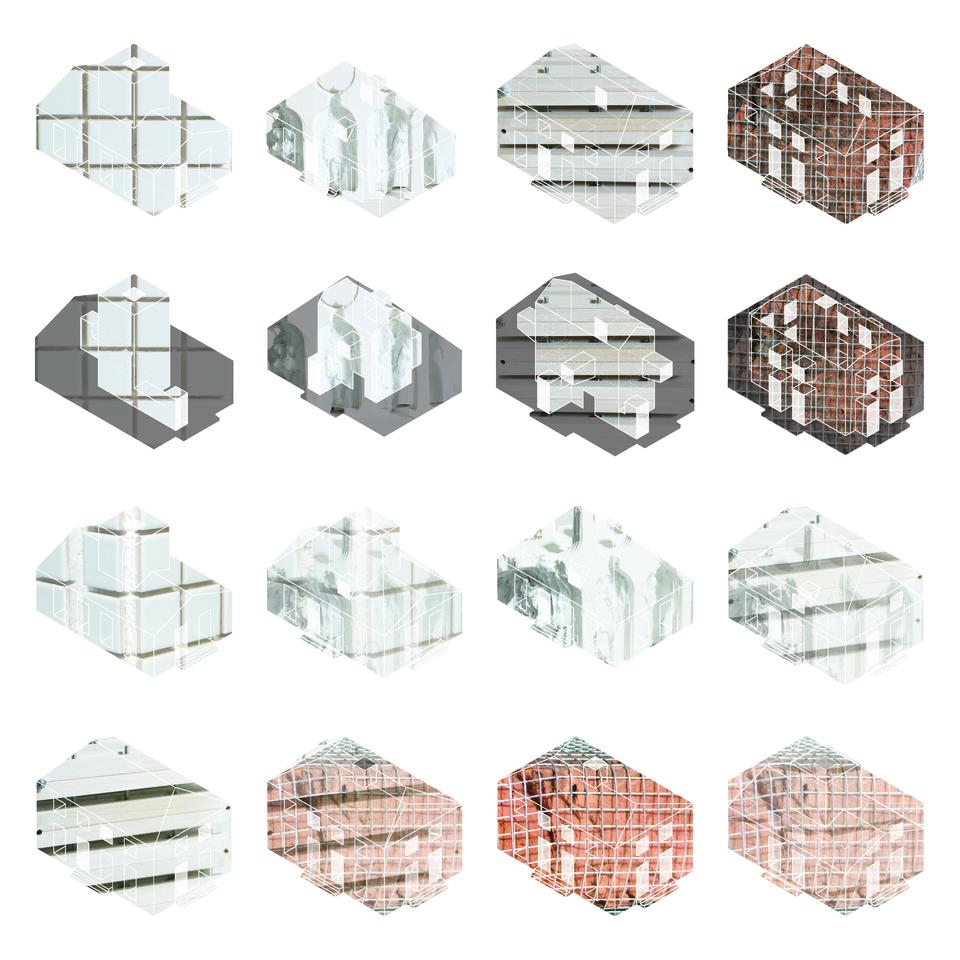Liam Burke
Notes on Institutional Architecture [Towards an Understanding of Erasure and Conversation]
Material Conversations /məˈtirēəl/ /ˌkänvərˈsāSH(ə)ns/ noun 1. derived from an early memory of forming relationships to objects, a way to understand the physical environment through a scaling down process that follows, but is not limited to, space, element, material. 2. the way in which material components are tectonically related 3. a process which would inform one to work with materials in a way which is conceptually informed by both aforementioned definitions 4. an integral aspect of architectural design, Material Conversations enable the architect to establish a language with which to relate to the components of their work, to better speak to those they design for.
I was raised in a religiously adjacent home. Sunday mornings spent in a twill padded pew, the first half hour spent singing. I always mouthed the words, I hated the idea of my voice, out of tune, creating discord amidst the chorus. I was six, or maybe four, probably eight.
The twill of a pew, the wood of a bench, the concrete of a step, the powder-coated steel of a column; all these became moments of familiarity in spite of their setting. Here began an understanding of my relation to space; an imagined conversation between myself and these tactile moments gave meaning to that moment in space. Just as one seeks out familiarity in a crowded room of strangers, I sought out the familiarity of the material qualities of inhuman objects, elements, furniture, etc. These early memories form my architectural intent; to establish conversations between myself and the materials I work with, for the sake of creating a means to converse with others through built environment and informed spatial dialogue.
This intent drove me to architecture, as a means to learn the language I was speaking to those materials, with the hopes that in learning to translate those conversations, I could connect to others as a means to actualize their needs for spatial connection. But, what I have learned is that material conversation is not the substance of a masters degree in architecture, instead there is talk of societal change, political empowerment, projection of identity, institutional reform, and paradoxical theorization (just to name a few). These are conversations I have participated and reveled in. These are conversations which comprised my projects within the institution of architecture that I am writing this in. These are conversations which must be had to produce an architecture that is more than a selfish expression. But to leave out a conversation in the process of design is to ignore a foundation of what informs design as a greater concept.
Here I will explore how a conversation is erased, misunderstood, and retold. Material conversation is a core memory which has taken me four years within an institution of architecture to recall. With this recollection, I seek to express how the absence of this conversation as an integral foundation of a developing architectural practice can produce acts of erasure and misinformed recollections.
This is an archive of subjectified contexts and de-objectified subjects, which informs a culmination of both in a composed representation. By fragmenting and erasing both information that I find superfluous, as well as information I find vital; then ultimately collaging an amalgamation of these artifacts, I seek to demonstrate how the act of erasure is an intuition fostered and encouraged by the institution of architecture. The church, as a metaphor for architecture, is an entity which is rife with both constructive and problematic conversation.
[Working] Artifacts in this archive include: historical preservation designation documents, historic American buildings survey documents and photographs, postcards, false combinations, architectural drawings, photographs of ephemera, redactions, flagrant manipulations, acts of erasure, not-so-clever lies, and other assorted realizations.
Image
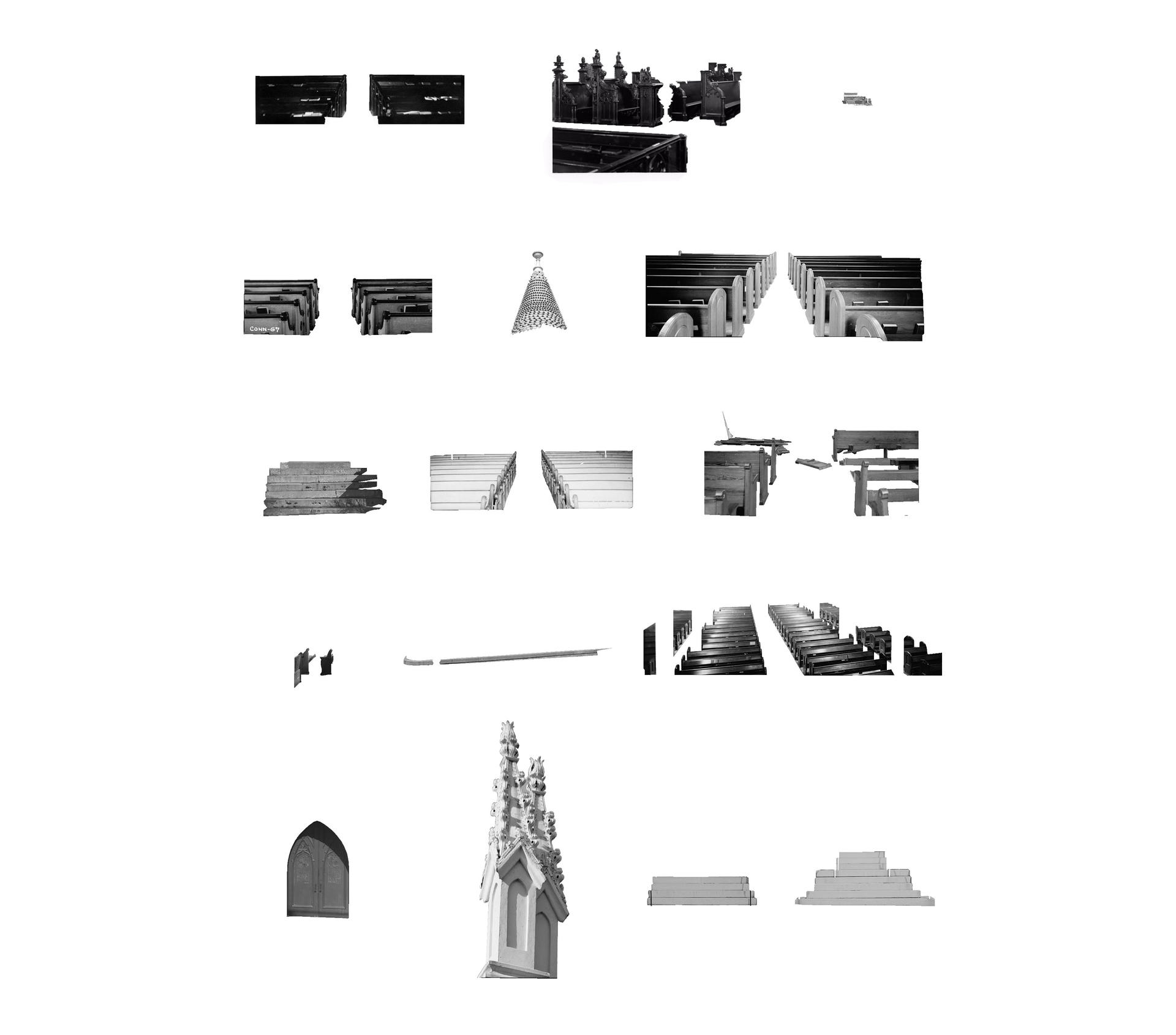
Grace Church Element Fragments
Digital
2021
Image
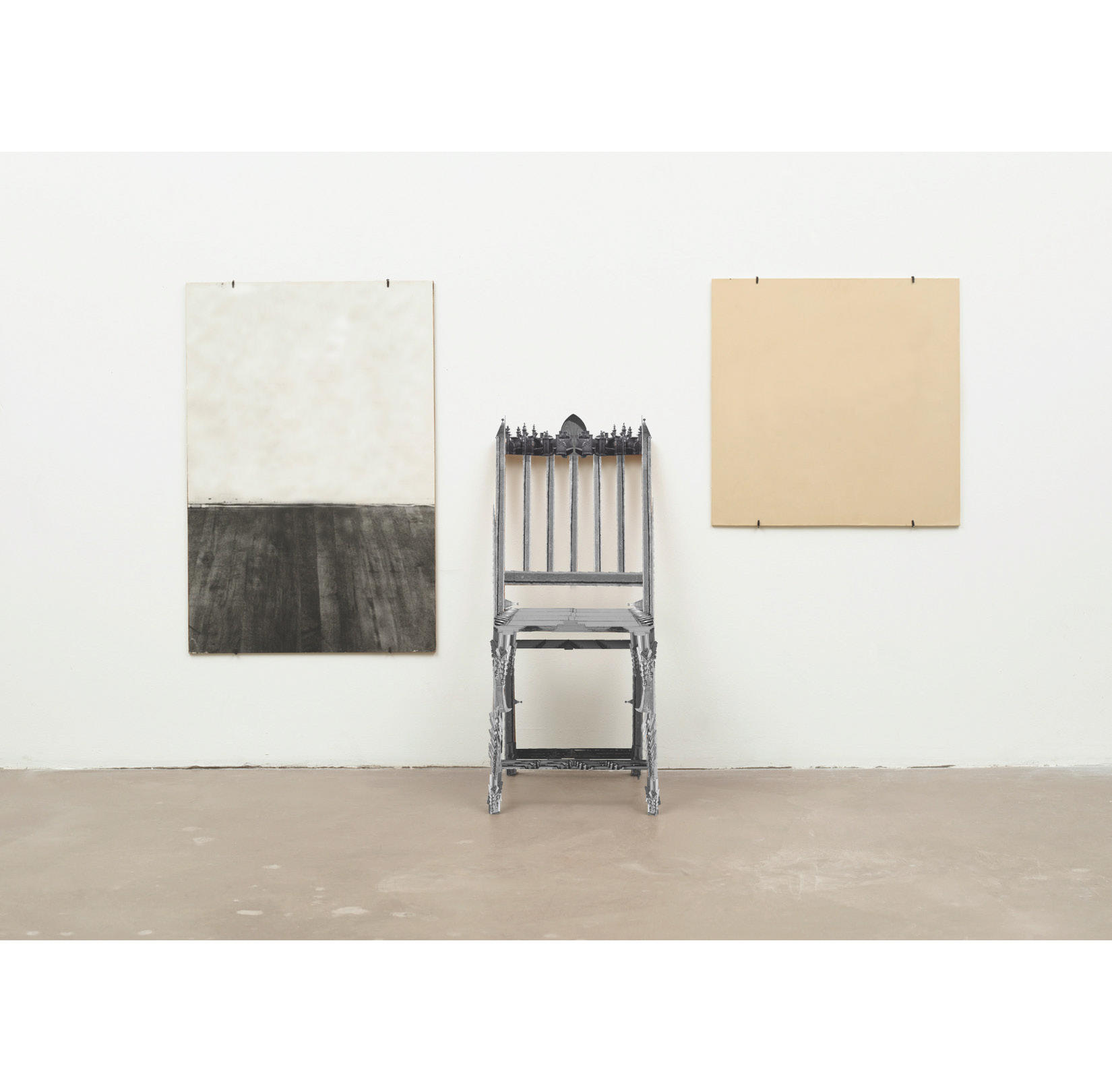
Grace Church: One and Three Erasures
Digital
2021
Is a space erased of its objects still that space? If those erased are given new purpose; even one vaguely informed by their origins, do they retain their identities, or is the manipulator the determinant? Architecture as manipulation is ever more present in the written texts accompanying, describing, and instructing the built and unbuilt environments. These texts, often expressed as definitive, are here the objects erased. What begins with an intent to reveal all but the objects vital to the interest of the archive, succumb to the process in allowing each document to reveal what it wants. The manipulated here becomes aware.
Image
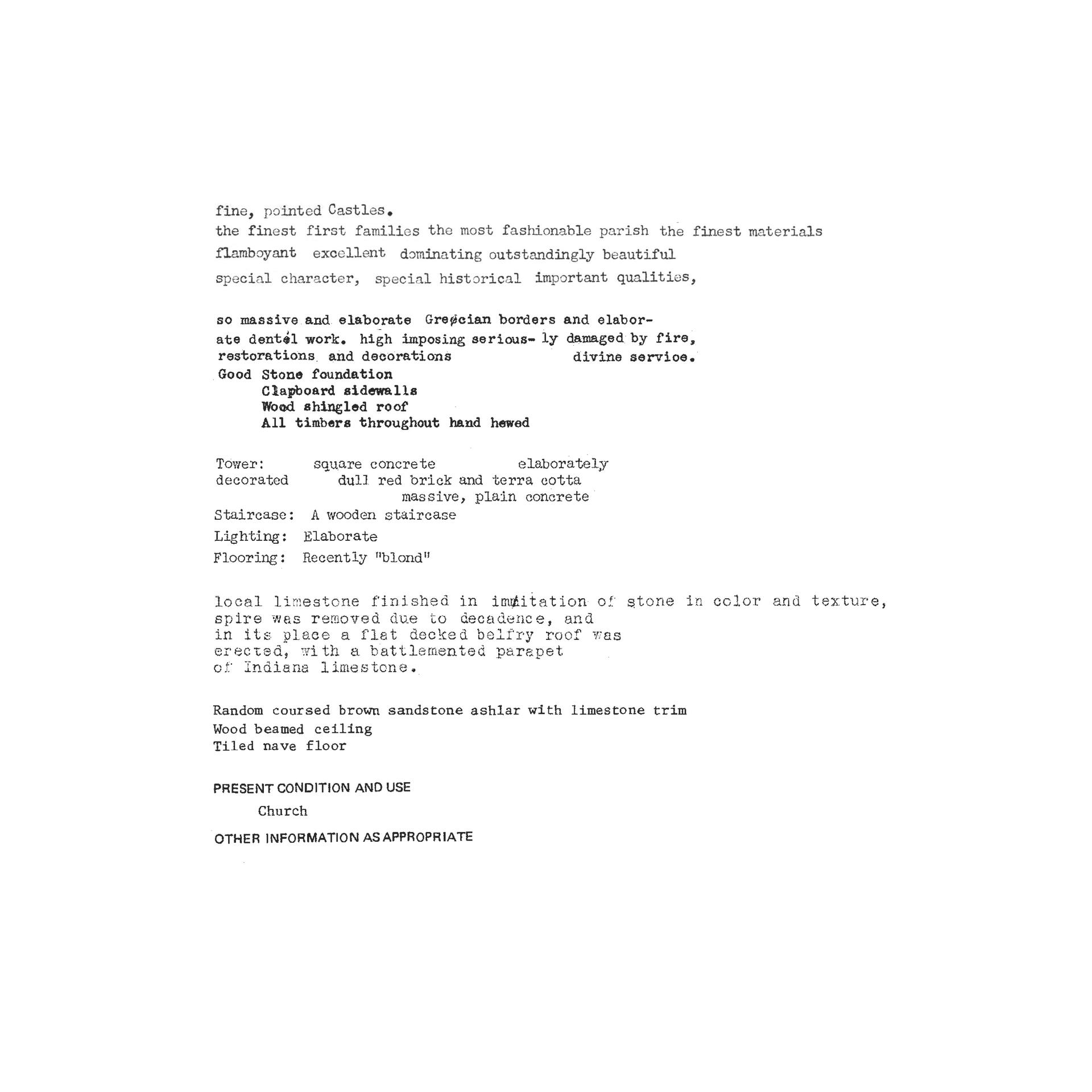
Grace Church Text Fragments
Digital
2021
Text fragments of eightish Grace Churches historical designation documentation photographs.
Image
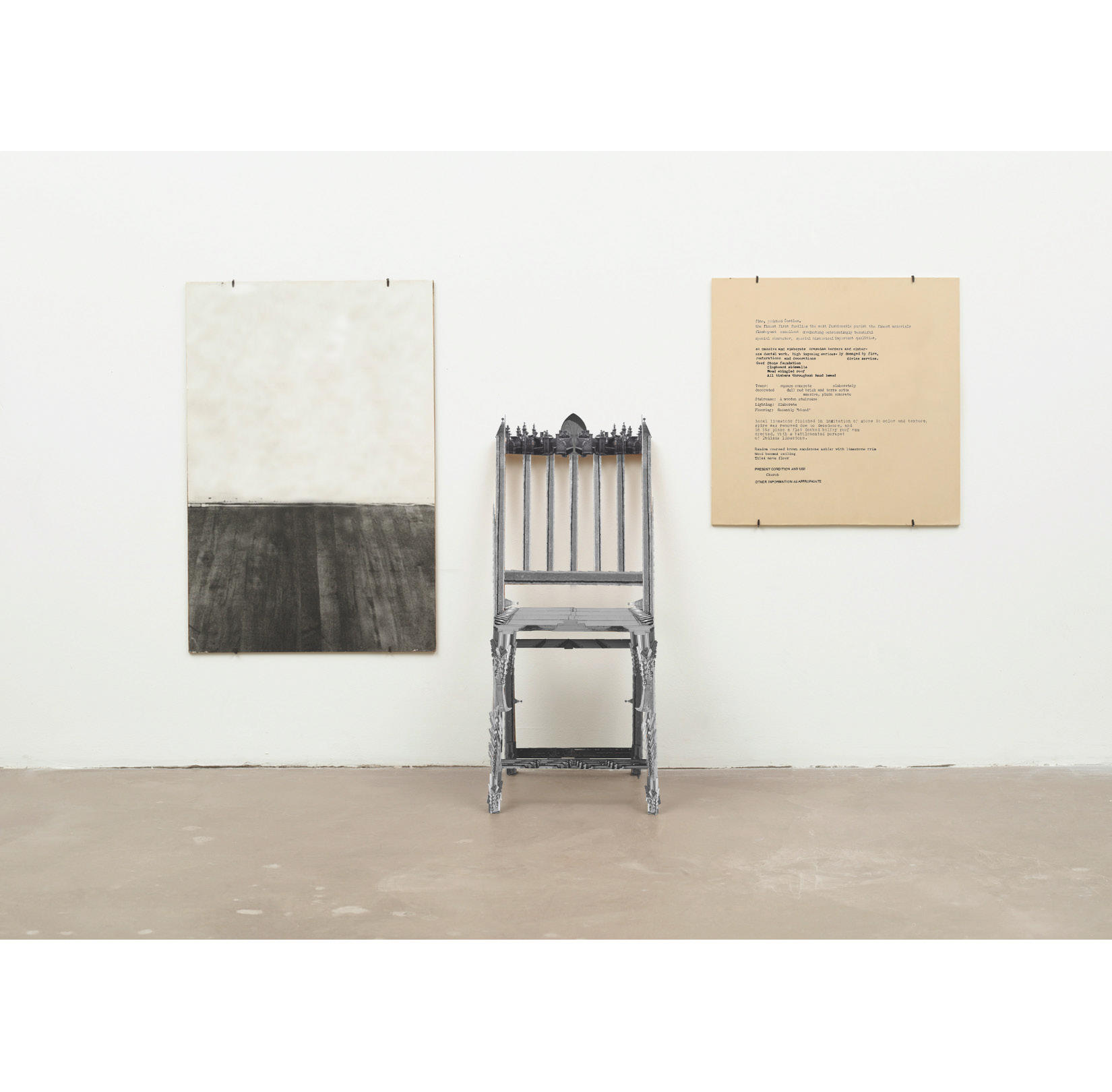
Grace Church: Two and Three Erasures
Digital
2021
Does a text subjected retain its meaning? In a more digestible reveal of the hand at play, it is obvious that words manipulated take on new meaning. I as architect and editor, am playing two roles with similar objectives; to better for the purpose of those to interact with my edited. But editing and erasing are intertwined, to redact one word is to overwrite another. To make better can have implications. When looking to these Grace Churches, institutions manifested to “better” lives, are they not simply overwriting existing words, conversations, and stories for the sake of their own?
Image
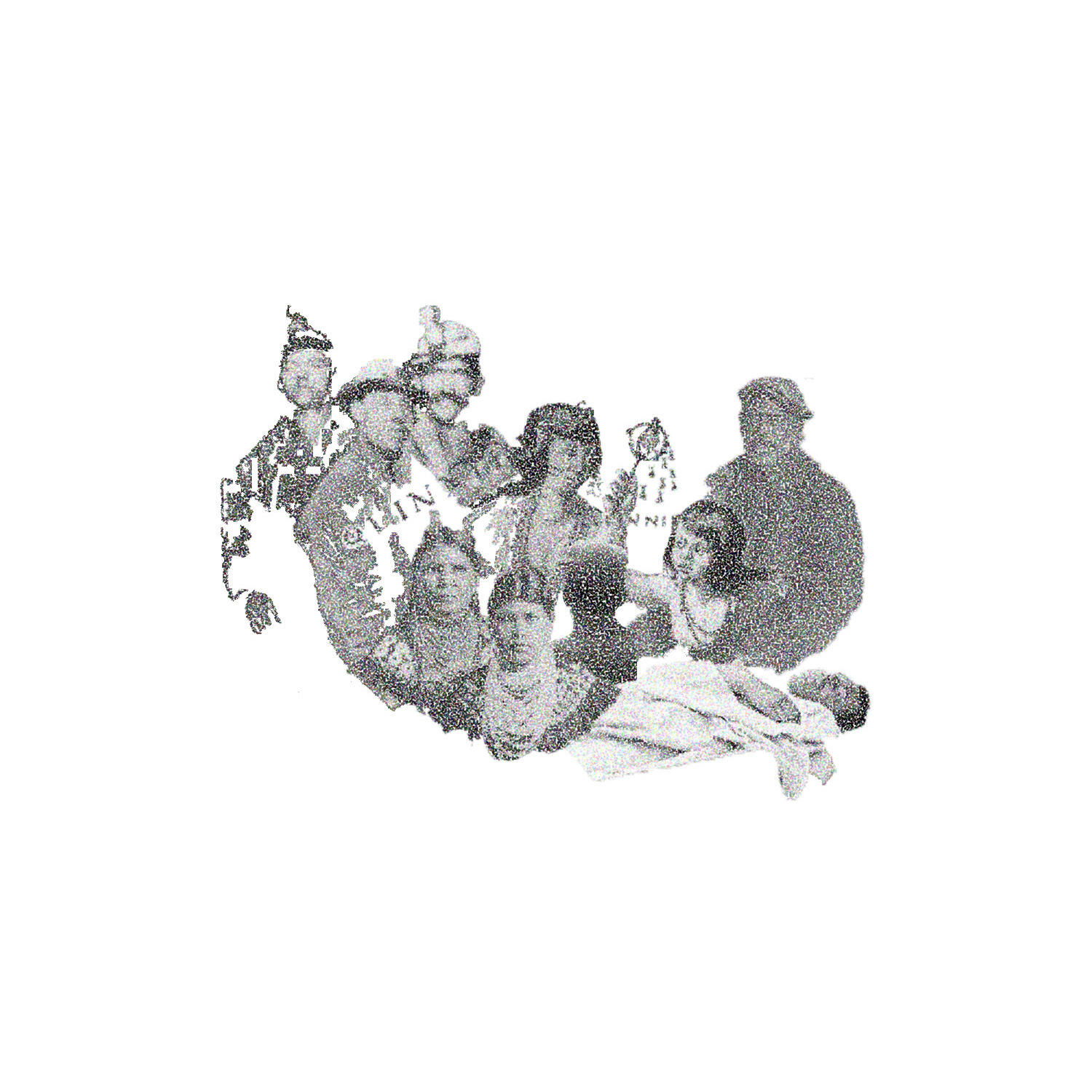
Grace Church Subject Fragments
Digital
2021
Subject fragments of erased cultures, peoples, and individuals.
- Architecture
- Ceramics
- Design Engineering
- Digital + Media
- Furniture Design
- Global Arts and Cultures
- Glass
- Graphic Design
- Industrial Design
- Interior Architecture
- Jewelry + Metalsmithing
- Landscape Architecture
- Nature-Culture-Sustainability Studies
- Painting
- Photography
- Printmaking
- Sculpture
- TLAD
- Textiles
